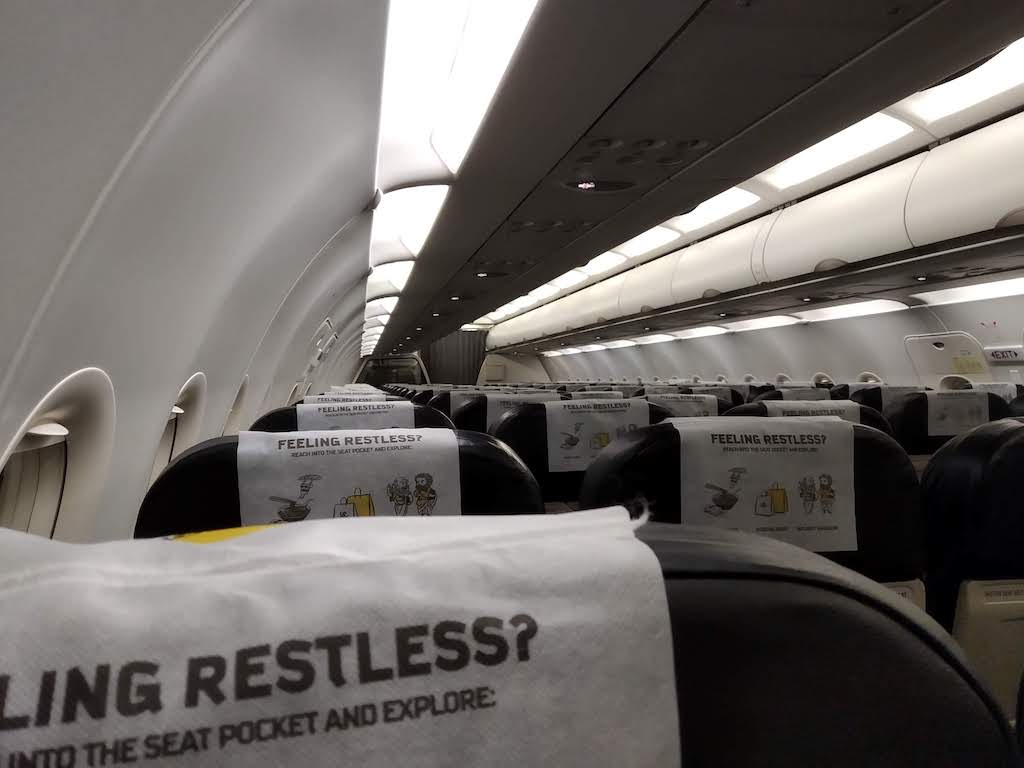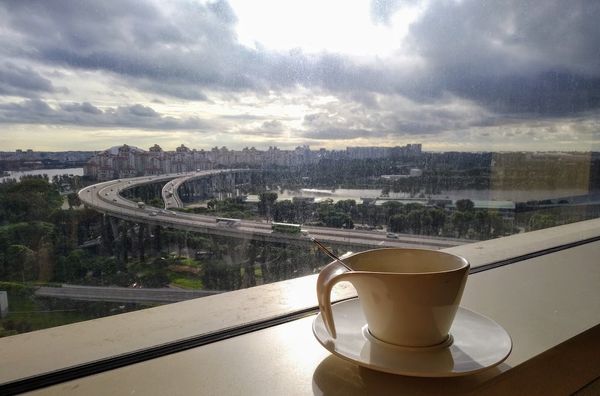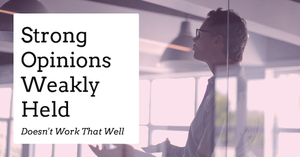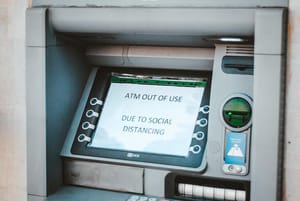The human brain is a funny thing. You can reason about something and accept, logically, that a thing is true, and then act as if it weren’t.
I arrived in Singapore on a Monday, around midnight. There were 11 of us on the flight from Kuching to Singapore; we sat two rows apart, at the back of the plane. The seats stretched out, all empty, in front of me.

We were travelling during the pandemic.
I disembarked into the air-conditioned bowels of Singapore’s Changi airport and my brain immediately registered that nothing was normal. Changi was silent. I remember this being the exact moment where I thought that perhaps nothing would be back to normal for a long, long time.
This was odd. I knew that the COVID-19 pandemic wasn’t over. I knew that the initial ‘hammer’ period of global lockdown was perhaps ending, but that the ‘dance’ was about to begin. And I had read all there was to know about Singapore’s quarantine policy. I knew all of this, but I hadn’t internalised it. It took walking through a quiet Changi Airport to drive the point home.
Why did an empty Changi affect me so strongly? A little context is in order. Changi Airport is critically important to Singapore’s role as a regional hub — so important, in fact, that it is considered a national security concern, the same way one might guard a vital national resource, or a nuclear stockpile. It’s not too crazy to say that what happens to Changi happens to Singapore’s economy; it is the lifeline through which the country gets its labour and its smarts.
Changi has four terminals, and before the pandemic began, construction had started on a fifth. The government shut two of those terminals down in the weeks after the global lockdown began.
I’ve spent lots of time in Changi’s terminals. Over the past six years, I flew back and forth between Singapore and Vietnam for my job. I travelled at least once a month; I knew the airport like the back of my hand. And I had spent at least two nights sleeping on reclining benches or grabbing coffees at 4am, while in transit through Changi to other places.
I had never seen the airport so quiet.

My flight — all 11 of us — went through an hour of processing at immigration. We were then bussed to a designated quarantine facility in the city.
A professor once told me that knowledge workers can pretend that nations don't exist, except when they're at the border. This is true. When you enter a country proper, you can perhaps pretend that things have returned to normal. My friends tell me that Singaporeans are gathering again, relieved to be out of lockdown. But at the border, things remain decidedly abnormal. There are no announcements. The flight displays are a contiguous block of red cancellations. Everyone wears a mask and gloves. Nobody seems happy.
Two days later, the Singapore government announced that the country’s second quarter GDP had dropped 41.2% on a quarter-on-quarter basis. I read the news while in quarantine. And I’m writing this at a hotel desk, where I’ll be for the next 14 days.
I’m beginning to internalise that things will look like this for a while. The pandemic is going to last longer than I wanted to believe it would.
How To Think About This?
Those of you who have been following this blog would know that I’ve been trying to figure out a properly calibrated response to the pandemic. I went through a period of forecasting, and then I looked into fast adaptation in the face of uncertainty. I concluded that I had to give up on predicting the future, because it was simply too difficult to do. Instead, it was more feasible to synthesise what is observable, and then orient rapidly based on that — which means destroying whatever we think is true of the world as quickly as we see fit to. I argued that this was the most cognitively tractable way to deal with all the uncertainty ahead of us.
But that is easy to say. It is much more difficult to do.
During this pandemic, I’ve discovered that my mind goes to two extremes. The first extreme is that I think this virus is a blip in the grand scheme of things, and that everything would return to ‘normal’ before too long. I catch myself becoming impatient with the world, because I want my old life back. I also catch myself thinking “when things go back to normal, I can …” and my brain fills it in with ideas like “meet friends”, and “fly back to Vietnam” and “play Judo.”
At the other extreme, however, I find myself thinking that everything has changed, and that nothing will go back to what it was. We’re bound to cut down on air travel. We’re probably going to live with social distancing forever. Zoom calls are a fixture now. I bounce between the two extremes alarmingly often, and spend a good bit of time reading things like The Atlantic’s series on the ‘new normal’. My mind claws desperately for what is known.
I’m starting to think, however, that both approaches are wrong. By letting my mind default to one view or the other, I am pre-committing myself to a model of the world before it is clear what that world would look like. It is obviously true that some things will change. And it is obviously true that there will be a ‘new normal’, whatever that is. But if I take my research into fast adaptation under uncertainty seriously, then the natural conclusion should be to let go of any preconceptions of the future. This includes the notion that things might return to the way it was before the pandemic.
To put this another way, I cannot adapt quickly to uncertainty if I'm constantly holding on to a picture of the past.
The tricky thing, though, is that my brain craves certainty. It wants to believe that everything that I have experienced at the airport is a temporary measure. If I tell myself that some things would change in a post-pandemic world, my brain — being lazy! — immediately conjures up a scenario where everything is permanently in lockdown. It takes real effort to conjure up a new world, with a mix of changed and unchanged things.
So here’s my solution: I’ve begun telling myself that there is no normal. I tell myself there is no future normal. There is no return to a normal. There is only what is happening now.
I’m aware that this stance is more of a useful fiction than it is an actual evaluation of reality. It’s a hack: a way to force my brain to stay away from the false certainty of ‘we’re going to return to normal’. A way to prevent it from organising observations according to an outdated model of reality.
Why might this be useful to you? As a thought exercise, think about what it must have been like to live in the aftermath of World War 2. Imagine that you are a healthy adult, and you hear the announcement of the end of the war over the radio. How would you even begin to think about your career in the years after demobilisation?
We may look back now and marvel at the changes that happened in the decade immediately after the war: the global rebuilding, the decolonisation of the East; the passing of the GI bill in the US and the slow descend into the Cold War. Given all that would come, how effective would you be if you saw the war as a blip in the normal state of things? How would your life have turned out if you had attempted to get back to the life you had before the war began? Or would you have been better served if you simply observed the world as it was changing, and not looked back?
It’s probably true that the eventual outcome wouldn’t be as extreme as I make it out to be. There will be a new normal, and we’ll get to it, eventually. But it is probably better to assume that there is no such thing. There are only things that are happening to us right now, that we have to orient ourselves around.
Better this than false confidence. Better this than the wrong model of reality.
Related: Reality Without Frameworks.
I also wrote a Twitter thread about the quarantine experience in Singapore:
Singapore's stay home notice procedures (aka arrival quarantine), a thread.
— Ced (@ejames_c) July 14, 2020
(Yes, that's a coffee cup on the ledge of my hotel room; more on this in a bit). pic.twitter.com/DzQ6aDciEE
Originally published , last updated .





